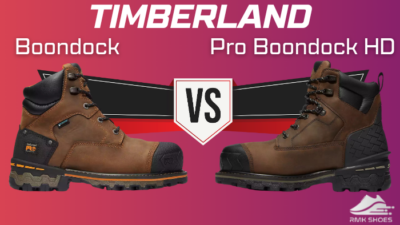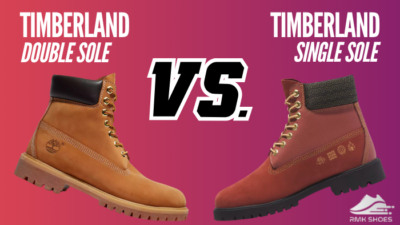The yearly upgrades of running shoes don’t really progress in a linear manner, as we see in smartphones.
Take Nike’s Pegasus lineup, for example. With their iterative updates, it becomes harder for general consumers to pick the right shoes from the lot. The same can be said for Nike Pegasus 38 and 39.
I was fortunate enough to get review samples for both pairs and spot some interesting findings.
Let’s lace up both pairs and uncover which one deserves your hard-earned money.
An Overview of the Nike Pegasus 38 and Pegasus 39
The Nike Pegasus is a legendary line of neutral running shoes that have graced our feet with versatility, comfort, and durability over decades.
These shoes offer a nice balance of cushioning, responsiveness, and stability, making them suitable for various distances and paces.
To this day, the legacy has continued with the release of Nike Pegasus 40.
With these continuous refinements, a few key models have managed to become fan favorites, and rightfully so. Some models offered better performance, while others offered more comfort.
The newer models of the past 2/3 years have hit a balancing spot for both comfort and performance.
Among these picks, the Pegasus 38 and 39 deserve a special spotlight, which also correlates with the recent queries.
Technical Comparison Between Nike Pegasus 38 and Pegasus 39
There are a few similarities and dissimilarities in technical aspects between the Nike Pegasus 38 and 39. Knowing such feature variances will help with better comprehension when we delve into an in-depth discussion.
It’ll also provide a glimpse at what we can expect from these kicks.
On that note, let’s take a look at the technical comparison between the Nike Pegasus 38 and Pegasus 39:
| Features | Nike Pegasus 38 | Nike Pegasus 39 |
|---|---|---|
| Weight | 10.6oz (Men’s size 10) | 9.2oz (Men’s size 10) |
| Focus | Neutral running, everyday training | Neutral running, improved responsiveness |
| Size | Runs true to size, wide widths available | Runs true to size, wide widths available |
| Upper material | Engineered mesh, Zoom Flywire cables | Engineered mesh, Flyknit tongue, Zoom Flywire cables |
| Insole | Removable | Removable |
| Midsole | React foam, Zoom Air unit in the forefoot | React foam, Zoom Air units in the forefoot and heel |
| Outsole | Storm Tread rubber with flex grooves | Carbon rubber with flex grooves and segmented heel crash pad |
| Stack height | 23-33mm | 18-28mm |
| Heel-to-toe drop | 10mm | 10mm |
| Toe box | Standard | Standard |
| Break-in period | A few short runs | Out of the box |
These technical variances might not seem much at a glance, but that wasn’t the case in my day-to-day experience after rocking these pairs. That brings us to our main topic.
Key Differences Between Nike Pegasus 38 and 39
As the Pegasus 39 is an iterative upgrade of the Pegasus 38, most of the technical traits are quite similar. But, there are a few key differences that set them apart and can greatly impact your purchase decision.
The following differences between Nike Pegasus 38 and 39 should help you decide in this regard:
1. Design Elements
Both Nike Pegasus shoes have a sleek and modern style to attain a classic look. The Zoom and Nike branding remains unchanged in the newer model.
As a result, both shoes are fit for casual wear and training.
The only defining aspect between the two models is the subtle details of certain design elements.
For example, the Pegasus 38 has more contrasting colorways with a two-tone design. Meanwhile, the newer models take the high road for the minimal and one-tone colorway.
And that’s not all!
The older model boasts integrated loops to hold the laces and two additional eyelets for a snug fit and heel lockdown. In contrast, the Pegasus 39 opted for thinner cable loops to hold the laces and retained the two extra eyelets.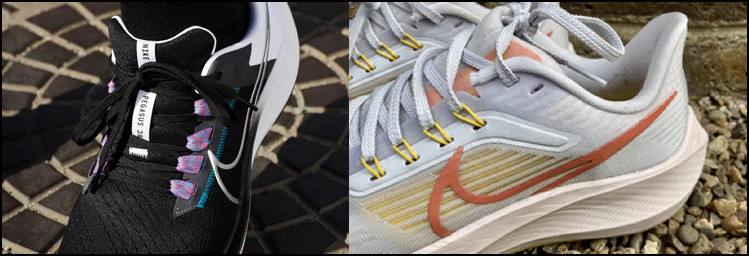
The change was solely for design purposes, as I felt no difference in lace fit. More on that later.
The redesigned mesh upper of the Pegasus 39 also looks better and more streamlined than the knitted mesh upper of the previous model.
Overall, Nike played safe with their Pegasus 39 shoes. It has a more widely appealing design and aesthetic fit for both indoor and outdoor conditions.
2. Upper Construction
Pegasus 38 and 39 from Nike boast somewhat similar upper construction with a few underlying differences. The most notable dissimilarity can be found in the upper material and tongue construction.
Upper Material
Both of the models have engineered mesh uppers that provide excellent breathability and abrasion resistance.
As a result, your feet won’t get sweaty in dry seasons, regardless of which pair you choose. You won’t have to worry about wear and tear either.
They also have additional overlays and Zoom Flywire cables for a more structured feel and stability.
The newer model gets an obvious upper hand with its improved upper material, which is more flexible and breathable. This refinement also contributes to the overall lightweight build of the shoe.
Tongue
Nike Pegasus 39 has more padding in its gusseted tongue and utilizes Flyknit material to provide a sock-like feel. The main upside of such a tongue is that it can adapt according to your foot to provide a comfortable run.
Such a trait is sorely missing on the Nike Pegasus 38.
In short, the newer Pegasus 39 gains an easy victory over the previous model as it should.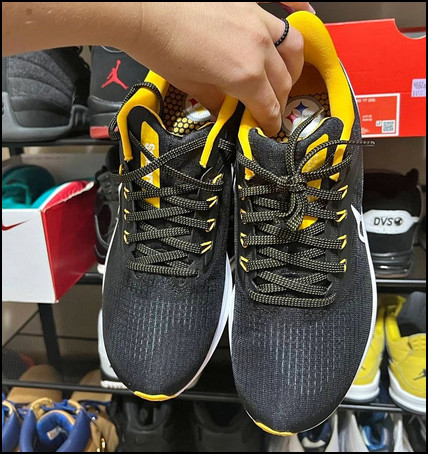
3. Midsole and Comfort
Choosing between the Pegasus 38 and 39 for midsole comfort depends on what kind of ride you prefer: plush and forgiving or light and responsive.
Let’s start with the Nike Pegasus 38.
The React foam throughout the midsole offers a deep, cushioned feel, which is ideal for neutral runners.
Conversely, the Zoom Air unit on the forefoot helped a lot in fast-paced running, thanks to the softer toe bounce. The stack height and heel drop are also quite good for natural movement.
When we put things into perspective, the Pegasus 39 takes the lead.
The re-engineered React foam of the newer model is not only softer and lightweight, but it is also responsive and balanced enough to provide a snappy ride.
However, the slightly narrower platform and lower stack height may not provide the stability that many overpronators are looking for.
Despite that nuance, the Pegasus 39 undoubtedly has a better midsole implementation for its purpose.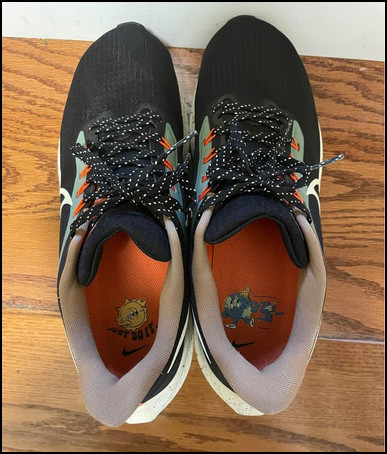
4. Outsole and Durability
For the most part, both 38 and 39 have pretty much the same rubber outsole with identical end results.
The more prominent flex grooves under the Pegasus 38 don’t provide any extra grip than the newer one.
I haven’t noticed any wear and tear in the outsole after several 5K runs, nor have I seen any crease in the upper. So it’s safe to say that these shoes have excellent durability.
Apart from visual differences, there’s a tie between Nike Air Zoom Pegasus 39 and 38 regarding the outsole and durability aspects.
5. Fit, Weight and Sizing
Being an updated version, the Nike Air Zoom Pegasus 39 sees a few upgrades in certain traits, like weight, fit, and sizing. Such changes should be noted carefully before making a purchase decision.
Fit
The standard width and engineered mesh upper of the Pegasus 38 can accommodate most foot shapes without feeling bulky.
The same is true about the newer model and then some.
Nike Air Zoom Pegasus 39 has a better heel hold and midfoot lockdown, thanks to its slightly narrower build. And the softer and more flexible upper makes sure to prevent any blistering or bunions.
However, I’d suggest going for a half-size-up for Pegasus 39 if you have a wider forefoot.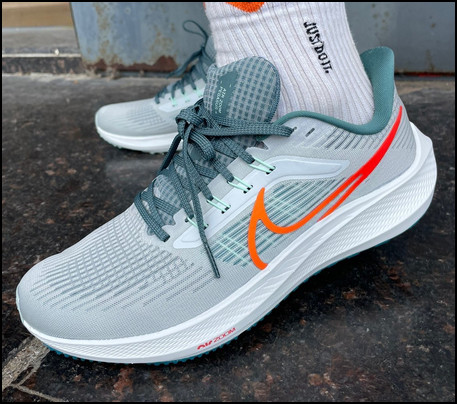
Weight
The Nike Pegasus 39 weighs around 9.2oz, and the previous model weighs around 10.6oz.
Granted that the overall weight can vary depending on the gender and size-specific variant, but the newer model is clearly much lighter than the previous one.
As a result, the Pegasus 39 is more suitable for those who prefer a lightweight feel.
Having a 1.4oz lighter running shoe also means enhanced agility and transitions.
Sizing
Both models run true-to-size and offer wide options for runners needing extra space.
Conversely, the women’s category might have some exceptions for the Pegasus 38 and run slightly larger in the UK standard.
I’d pick the snug fit and lighter feel offered by the Pegasus 39, despite the 38 feeling more accommodating. For a daily trainer, a proper fit and less bulky feel can go a long way if you’re aiming to wear these kicks throughout the day.
6. Performance Enhancements
During my prolonged training, the Nike Pegasus 39 felt more responsive throughout the entirety of the midsole.
Nike has provided an additional Zoom Air unit in the heel area of this newer model, which contributes to such responsiveness.
The Flyknit tongue and streamlined silhouette also allow a more natural foot strike without worrying about overpronation. That added stability also becomes quite useful in stationary workouts or short runs.
Switching to the Pegasus 38, the plush midsole has a nice bouncy feel to it. Any long-session workout or running will feel comfortable and forgiving. The newer model lost this trait as Nike opted for a slightly less cushioned and more lightweight midsole.
However, the Pegasus 38 doesn’t feel as snappy as the Pegasus 39 due to this weight increase.
To add, the Pegasus 39 has enough bounce to pick up the pace in tempo runs. Combining the lighter weight, it also feels faster compared to the older model.
The firmer midsole and the lightweight feel of the Nike Air Zoom Pegasus 39 is exactly what we wanted from an everyday running shoe. Its versatility offers a better performance range and overall satisfying experience than the Pegasus 38.
Strengths and Weaknesses of Nike Pegasus 38 and Pegasus 39
Despite some major differences, both shoes have unique advantages and disadvantages when we hit the road.
Looking through these pros and cons of Nike Pegasus 38 and 39 should make it more evident:
Nike Pegasus 38
- »Plush and forgiving ride.
- »Adequate comfort and stability.
- »Slightly more durable.
- »More prone to getting discounts.
- »Heavier and bulky.
- »Less responsive.
Nike Pegasus 39
- »Fits more true-to-size than the competitor.
- »Lighter and faster.
- »More suitable for tempo runs or fast-paced short sessions.
- »Improved cushioning for a better balance.
- »Less durable.
- »Slightly less stable.
If you’re still on the fence and can’t decide which one would serve you better, move on to the verdict to get a conclusive answer.
Nike Pegasus 38 vs Pegasus 39: Which One Should You Pick?
The Nike Pegasus 39 is a worthy upgrade over the previous Pegasus 38 model. The lightweight feel, better midsole, and more breathable upper material of the newer version provide an improved training and running experience regardless of season.
Although, the previous model offers a slightly more durable and comfortable ride.
So keep that in mind if you’re concerned about foot fatigue.
That being said, the newer version of Pegasus is easy to recommend for the masses, as it is an overall refinement of the previous iterations with a better value proposition.
Frequently Asked Questions
Is the Nike Pegasus 39 good for running?
Yes. The Pegasus 39 from Nike has a supportive and performance-oriented platform. As a result, you’ll get a smoother transition and better impact absorption.
How much does the Pegasus 39 weigh compared to the 38?
Both men’s and women’s Pegasus 39 weigh less compared to the Nike Pegasus 38. For example, the men’s 10 size of the Pegasus 39 is around 1.4 ounces lighter than the previous 38 model.
Can you wear Nike Pegasus every day?
Yes. Nike Pegasus 40, 39, and 38 kicks are ideal choices for daily training or casual wear, thanks to the plush cushioning and breathable upper construction.

